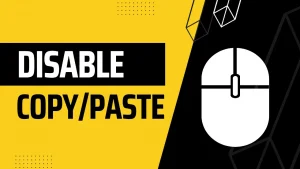How to Create Sitemap.xml in Blogger?
The XML Sitemap file functions as a directory of all web pages on your website or blog. These sitemap files enable search engines like Google, Bing, and others to locate your website’s pages that their regular scanning search algorithms would have missed.
In this post, you will learn how to create sitemap.xml in Blogger.
What is a Sitemap for a Blog?
An XML sitemap is a file that displays all of your content to search engine crawlers like Google. Search engines such as Google and Bing can quickly find and index your information with the aid of this file.
Simply put, creating an XML sitemap will let search engines know what content is on your website or blog.
Don’t let the rankings mislead you. The improvement of your search engine rankings is not guaranteed by creating a sitemap; instead, it merely improves how search engine crawlers access your website. The crawlers will not miss any information as a result when indexing your material.
Why is Sitemap so Important?
A sitemap is essential for a new website, just as you would need one before embarking on a road trip. It permits crawlers to access your website, which results in indexing. After then, whenever someone uses a certain search term on a search engine, your website and its information are accessible.
It is a vital component of SEO (search engine optimization). A sitemap is crucial whether you are redesigning or starting from scratch when developing your website.
When consumers search for certain keywords that are related to the content you have supplied, a correctly constructed sitemap enables search engines to index your website.
Because of this, search engines can quickly determine how many pages are on your website, what is on each page, and how frequently you update it.
The Problem with Blogger Sitemap Files
A comprehensive XML sitemap file ought should list every page of a website, but if your blog is hosted on the Blogger or Blogspot platform, this isn’t the case.
Sitemaps can be sent to Google in RSS, XML, or Atom formats. They advocate using both XML sitemaps and RSS/Atom feeds for optimum crawling.
Only the most current blog posts are included in every Blogger blog’s default atom RSS feed. This is a drawback because older blog posts that aren’t included in the default XML sitemap file might never be indexed by search engines. However, there is a straightforward workaround for this issue.
How to Create Sitemap.xml in Blogger?
This section applies to both self-hosted Blogger blogs using a custom domain and ordinary Blogger blogs using a blogspot.com address (like postsecret.com).
Here’s what you must do in order to use an XML sitemap to show search engines the entire site structure of your blog.

- Launch the Sitemap Generator and enter your Blogger blog’s complete address.
- When you select the Generate Sitemap button, this tool immediately generates an XML file containing your sitemap. After that, the entire text must be copied to your clipboard.
- Then, activate the Custom robots.txt option under Settings > Search Preferences from the dashboard. You must paste your XML sitemap here and then save your changes.
We’re done now. The robots.txt file will help search engines identify your XML sitemap files without your assistance; they will do so on their own.
The XML sitemap generator internally keeps track of all the blog entries that are present on your Blogger blog. The postings are then divided into batches of 500 posts each, and numerous XML feeds are generated for each batch. Since each post on your blog would be included in one of these XML sitemaps, search engines will be able to find every single one of them.
How to Create Sitemap.xml in WordPress?
WordPress did not come with built-in sitemaps until August 2020. However, a simple XML sitemap feature was made available in WordPress 5.5.
This enables automatic XML sitemap generation in WordPress without the need for a plugin. WordPress will display the standard XML sitemap for you if you simply append wp-sitemap.xml to the end of your domain name.
In order to ensure that each new WordPress website does not lose out on the SEO advantages of an XML sitemap, the XML sitemap capability was added to WordPress.
However, you cannot simply select what to add to or remove from your XML sitemaps, and it is not particularly versatile.
Fortunately, almost all of the best WordPress SEO plugins include a sitemap feature. You can choose which material to include or exclude from your WordPress XML sitemaps, making these sitemaps better.
Using Yoast SEO
Yoast SEO, the WordPress SEO plugin, will enable XML sitemaps for you immediately if you are using them.
Installing and activating the Yoast SEO plugin is the first step.
Visit the SEO » General page after activation, then click the Features tab. From here, you must scroll down and make sure that the “XML Sitemap” option is selected.

To save your settings, select the Save Changes button again.
You can tap on the question mark symbol next to the XML Sitemap selection on the page to confirm that Yoast SEO has generated an XML Sitemap.
Then, to examine your live XML sitemap created by Yoast SEO, click the ‘See the XML Sitemap’ link.
By simply including sitemap index.xml at the end of the address to your website, you may also access your XML sitemap. Yoast SEO generates numerous sitemaps for various kinds of content. Sitemaps for articles, pages, authors, and categories will be created by default.
Conclusion
We hope that you have learned how to create a Sitemap in Blogger and WordPress. Follow the given steps carefully to get it on the first try.
Stay tuned for more tutorials like this.






